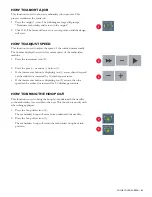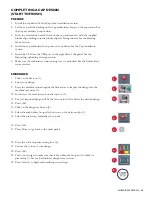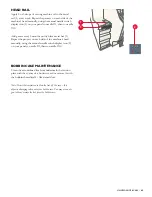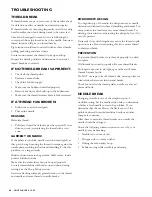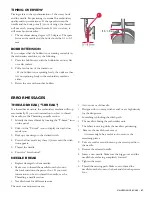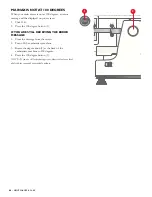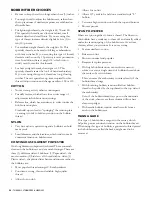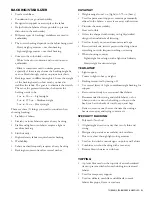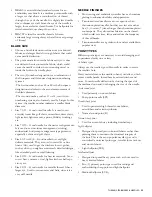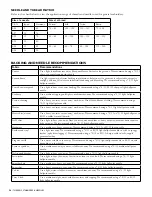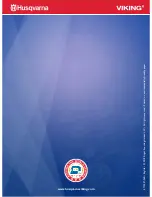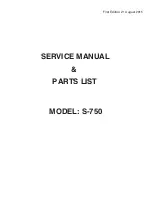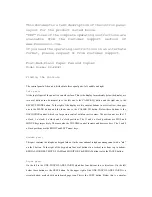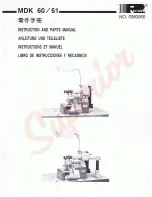
THREADS, STABILIZERS & NEEDLES –
49
THREADS, STABILIZERS & NEEDLES
THREAD FIBER CHOICES
Lightweight threads are used for fine fabrics, small and
delicate details and small fonts. The standard weight for
lightweight threads is 60, 70 and 80.
• If this type of thread is being used – increase density
slightly by five (5) to ten (10) percent.
Medium-weight threads are used to fill large embroideries
with fewer stitches. The weight of a medium-weight thread
is 30.
• If this type of thread is being used – decrease stitch
count by 15 percent. Multi-color threads of medium
weight have a weight of 35 (35 is the most widely
used).
Heavyweight threads are used to create the look of hand
embroidery. The weight for heavyweight thread is 12. If
this type of thread is being used:
• Use long floating stitches
• Perform tension adjustment around 100-110 stitches
• Perform needle change around 100-110 stitches
• A special set-up time is required
RAYON THREAD
• Available in sizes 30, 40 and 60
• Widely used by U.S. embroiderers
• More expensive than other fibers
• Beautiful, supple, friendly fiber
• Natural fiber made from cellulose
• Not one of the stronger fibers
• Handling properties are superior to other fibers
• Used for embroidery thread and looks very rich when
sewn into fabric
• Slight equipment problems can cause an unacceptable
number of thread breaks when using
• Susceptible to damage by environmental factors, such
as light, heat and cold
• Black and white tend to break more frequently due to
the bleaching and dying processes
POLYESTER THREAD
• Excellent sewing ability
• Good choice for embroiderers
• May be too strong for certain lightweight, delicate
goods
• Strong resistance to thread breaks, which can aid in
production efficiency
• Can accept neon dyestuffs
• Excellent resistance to abrasion and bleaching
• Good choice for items that will be subjected to
sunlight, chlorine or harsh laundering
• Polyester is stiffer than rayon, and it may require some
tension or spring adjustment
METALLIC THREAD
• Stiffer than other varieties with an interesting
construction
• Metallic film glued to a nylon or polyester core
• Quality varies widely among manufacturers
• If you have experienced difficulty in sewing with a
metallic thread, try:
-Using a smaller size metallic
-Using a larger eye needle
-Thread the metallic through the packing peanut
attached to your thread tree
-Check programming
-Check density
-Check stitch lengths
COTTON THREAD
• Easy to adjust tensions
• Matte finish that is sometimes preferred to the shiny
look of the other thread types
• Available in a broad range of sizes from very large to
very fine
THREAD CONSUMPTION
How much thread will you need for a particular job?
• Thread consumption varies according to the type of
stitch.
Longer stitch lengths use more top thread than fill
stitches.
• A 5,000-yard cone yields about 9,000,000 stitches.
Bobbin thread yield is about 25,000 to 30,000 stitches
per bobbin for style “L.”
• The amount of yards per bobbin varies according to
thread type.







